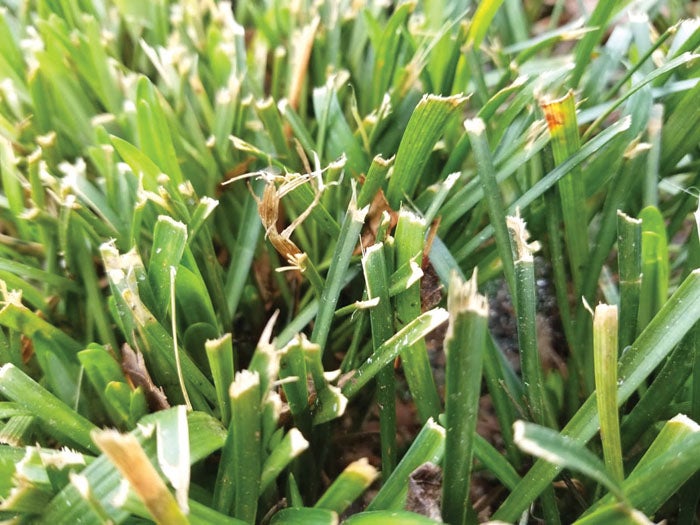With warmer weather, it’s mowing season
Published 12:00 am Friday, March 20, 2020

- Submitted photo Dull lawnmower blades tear grass and leave dry, jagged ediges.
Fescue lawns are becoming lush and green with warmer spring weather, providing a much-needed green backdrop to the landscape. Mowing will quickly be a weekly routine for many homeowners.
Lawn mower blades need to be sharpened on a regular basis during the summer to produce the best quality lawn. Dull blades leave jagged cuts on the freshly cut tips of grass which becomes a natural opening for fungal disease problems.
Set the mower height to mow fescue lawns at 3 1/2 to 4 inches in height. High mowing allows greater root penetration for the cool season grass and also reduces heat and drought stress. High mowing is essential for increasing turf survivability during the heat and drought of summer.
Mowing turf high also reduces the weed growth. Taller turf blades shade weed seeds, reducing germination of many weed seeds. Herbicides kill broadleaf weeds such as chickweed, henbit, wild garlic and dandelion.
Broadleaf herbicides contain a mixture of 2,4-D, dicamba and MCPP. These herbicides are designed to kill broadleaf weeds without killing the grass. Herbicides need to be applied in the cool weather of early spring to avoid drift in hot, humid weather.
Cool season fescue lawns should not be fertilized after May 1. Late fertilization promotes growth which actually weakens fescue lawns in hot weather. Weak turf is easy prey to fungal diseases such as brown patch. Brown patch is a fungal disease that attacks cool season turf in warm, humid weather.
The disease is characterized by large brown patches of dead turf in the lawn. Entire lawns may be destroyed by this fungal disease. Over-seeding with a blend of turf-type fescues reduces the spread of this disease.
Cool season turf such as fescue becomes semi-dormant in hot weather. Temperatures above 85 degrees induce dormancy and turf will turn brown and look as if it’s dead. It is not necessary to routinely water turf to keep it green all summer. Dormant, brown lawns will resume a normal green color with natural rainfall and lower temperatures.
Lawns must be watered deeply to survive a prolonged drought. Water lawns every three weeks when summer drought threatens turf.
Fescue turf may be irrigated on a regular basis during the hot summer months. One inch of water per week will keep lawns green. Homeowners need an ample water supply and must be committed to make summer irrigation feasible. Sporadic or shallow watering is detrimental to the life of cool season lawns in hot, dry weather.
Darrell Blackwelder deblackw@ncsu.edu is the retired horticulture agent and director with the North Carolina Cooperative Extension Service in Rowan County.


